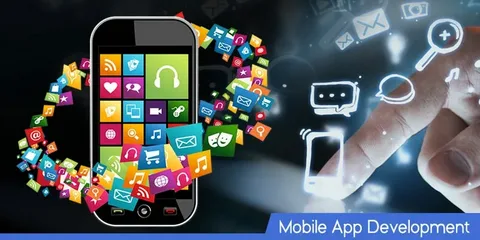If your creative idea doesn’t have a mobile application, you are missing out BIG TIME! Whether you are building a simple game or a learning platform, a fintech startup or an ecommerce platform, a healthcare platform, or a travel agency, or something entirely new, apps are where people spend most of their time.
In fact, did you know that an average person spends about 4.5 hours a day on their phone? And according to Statista, over 257 billion apps were downloaded worldwide last year alone!
That means your app has to compete with millions of others to grab eyeballs. So if you’re not on the App Store or Play Store, you’re basically invisible to a huge chunk of your potential users or customers. And that’s a huge missed opportunity if not more.
But here’s the thing. Building a great app isn’t just about having a cool idea. It takes a smart plan, the right team, and a clear process. When you hire mobile app developers, they help turn your idea into a real app people will love to use.
Curious How Mobile App Development Services Work? Let’s Break It Down.
In this blog, we’re going to break down the entire journey you’ll go through when you work with app developers that are providing an affordable mobile app development company. You’ll get the inside scoop on what to expect (from the very first chat to launch day and beyond). So without further ado, let’s get into it!
1. Clarify Your Idea and Plan Ahead
This is your “What are we even doing?” moment. You’ve got the idea, that’s cool. But now it’s time to break it down into something a dev team can actually build. This stage clears the fog and gets everyone aligned on what the app needs to do and what success looks like.
- Define the core problem your app solves
- Pinpoint your audience: Who is this really for?
- Choose the essential features (and ditch the ones you don’t need yet)
- Set realistic goals for time, budget, and launch
Once your idea’s rock solid and mapped out, you’re no longer just dreaming, you’re officially building.
2. Research the Market
You can’t build in a vacuum. This is the “let’s see what’s already out there” phase, where you poke on your competitors and learn from their wins and screw-ups. You’ll make sure your app actually stands out instead of blending in.
- Analyze competing apps and their feature sets
- Look through reviews to spot user pain points
- Identify market gaps you can fill
- Validate demand with real user input or MVP-style surveys
By the end of this step, your app idea is made with strategy in mind.
3. Design the User Experience
Here’s where things start to look real. You’re designing the face of your app. This includes the layout and flow. Basically, you make the vibe here. But it’s not just about being pretty. It’s about guiding users effortlessly from action to action without making them think too hard.
- Sketch out user flows based on real behavior
- Design wireframes and prototypes that reflect natural usage
- Create a consistent visual style that fits your brand
- Make sure everything’s smooth on both iOS and Android (if you’re building both)
Good UX design doesn’t scream for attention; it just feels right. That’s what you’re aiming for here.
4. Build the App
This is the part where the magic happens under the hood. Devs take everything you’ve designed and start turning it into an app that works exactly like you want. They make every screen and function work smoothly.
- Set up the backend architecture
- Build out the frontend with all the screens and interactions
- Integrate APIs for maps, notifications, etc.
- Ensure scalability and security from the start
By the time this stage is done, your idea is in the form of an actual working app.
5. Test Thoroughly
Now it’s time to break your own app, on purpose. That’s how you’ll test if your app can survive in the real world. Testing is where you push everything to its limits and make sure it holds up under pressure, on all devices, in all situations.
- Run functional tests to catch bugs and glitches
- Do device testing on different phones, screen sizes, and OS versions
- Get real users to try it and give brutally honest feedback
- Iterate and fix, then test again
This phase might be tough, but it’s the reason your app won’t crash the minute it hits the real world.
6. Launch and Maintain
Pop the champagne, then get back to work. Yes, the launch is exciting, but your job isn’t done. Now it’s about learning from the real users and fixing things fast. That’s how you’ll keep the momentum going. If you don’t, things might just fail.
- Publish to app stores with optimized listings
- Set up feedback channels and track usage analytics
- Release updates based on bugs and user requests
- Plan future features to keep the app fresh
Think of launch as Day One of a long and awesome journey.
Conclusion
When looking for mobile app development services, it’s vital to have a partner by your side who actually understands both you and their process. If you’re with a company that is clueless about what it’s doing, then how will things work well for you?
If you want your project to actually succeed, then watch out for red flags. Delayed responses and missed deadlines in the early stages don’t mean it will automatically be solved in the future. Choose a company that’s with you from the start. Be vigilant, that’s the only way you’ll get an app worth your efforts.
